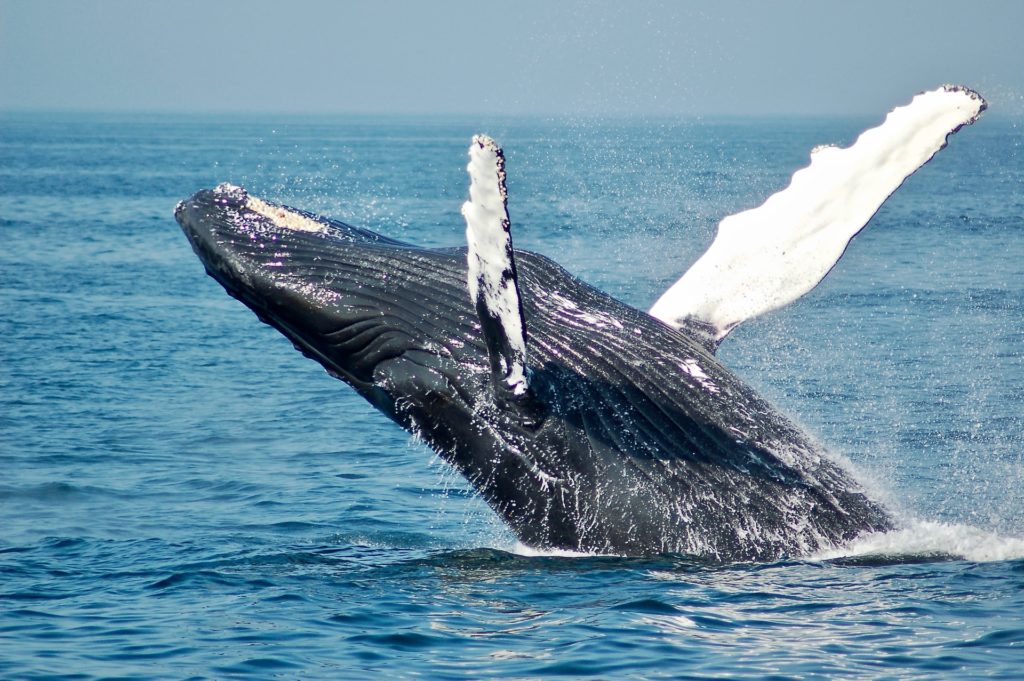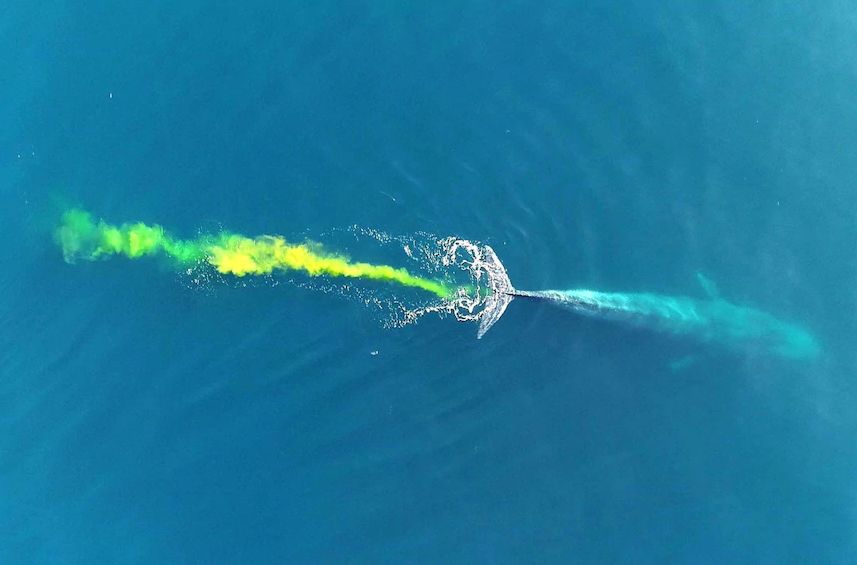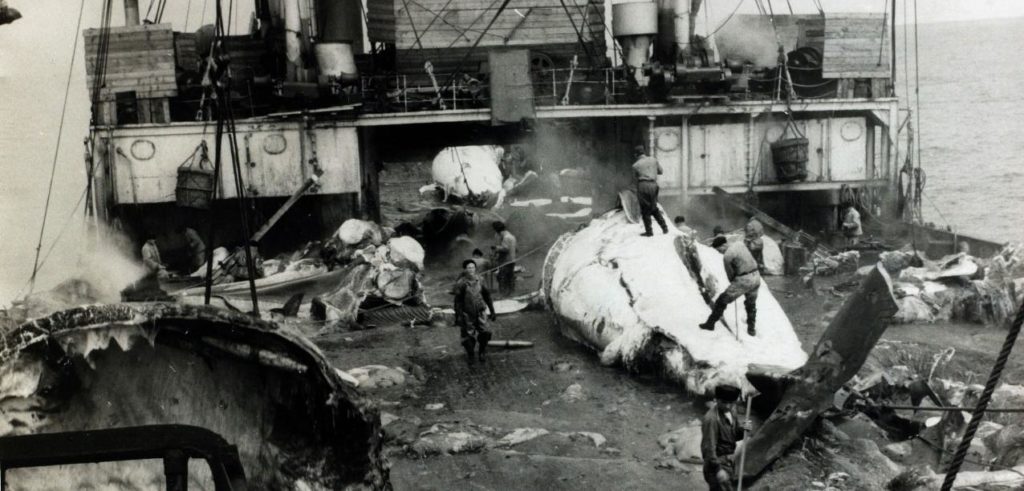Ocean acidification occurs when the pH level of seawater decreases, which is most frequently caused by the ocean absorbing excess CO2 from the atmosphere. Ocean acidification has negative effects on a variety of ocean ecosystems and life forms, including whales.
This article will explain how whales are affected by ocean acidification and the importance of whales to ecosystems.
Background information: Ocean Acidification Infographic
Table of Contents
How Are Whales Affected by Ocean Acidification?
Historical Whale Population Decline and Recovery
How Are Whales Affected by Ocean Acidification?
Whales are affected by ocean acidification in numerous ways.

First, whales may suffer from starvation and other diseases due to ocean acidification’s effects on their food supply. The increase of ocean acidity decreases the number of carbonate ions. This ion is essential to most shell-forming organisms including krill, which is the primary source of food for baleen whales, including blue whales and humpback whales. Without enough krill to sustain the whales, they can starve or seek alternate food sources, which may not give the appropriate nutrients the whales need, leading to malnutrition and other diseases.
There are also some studies theorizing that ocean acidification may affect the hearing abilities of whales and dolphins. This is important because hearing is crucial for whale communication. As the oceans become more acidic, the concentration of borate in the water decreases, which could affect the absorption of sound energy that whales rely on for communication. However, this theory was countered in a 2010 study, in which researchers from the Woods Hole Oceanographic Institution argued that acidification will only have a minimal effect on whales’ ability to communicate.
In summary, ocean acidification may contribute to decline in whale populations. This could become a serious problem for ocean ecosystems and climate change, as whales help to maintain balance in the ocean and atmosphere.
The Importance of Whales
Whales play a crucial role in maintaining balance in the ocean ecosystem, which helps marine life and people alike. Ocean acidification threatens the important services that whales provide. Here are some of the important roles of the world’s largest mammals.
Food Chain Guardians
In their place at the top of the food chain, whales play a very important role in maintaining the balance of the marine ecosystem and the supply of food in the ocean. For example, each day, a blue whale or a humpback whale can eat up to 40 million krill. Due to this massive appetite, overpopulation of krill is prevented, which helps preserve the ecological balance of the marine ecosystem.
Natural Nutrient Suppliers

Source: Ian Weisse / abc news Australia
Whales also act as fertilizer transporters in the ocean. Whales contribute to ocean fertilization through their deposits and urine. According to research, a sample of whale fecal matter contains 10 million times more iron than the amount of iron present in a sample of ocean water of the same weight. These nutrients are essential to the health and reproduction of different marine organisms, including phytoplankton (which help reduce ocean acidification). Because whales are migratory animals, they supply these nutrients to different ocean locations.
Climate Change Fighters
Phytoplankton usually thrive where whales are found. This is because whale deposits fertilize phytoplankton, which allows plankton to reproduce and thrive. Each year, phytoplankton absorb around 10-20 billion tons of CO2 from the atmosphere, and are considered the world’s largest producer of oxygen, as they help account for 70% of the world’s oxygen supply. Without the nutrients whales provide, phytoplankton might not flourish, which could greatly affect the ocean’s carbon cycle and increase ocean acidification.
Historical Whale Population Decline and Recovery
The population of whales started to decline in the 11th century as a result of the growing whaling industry. People hunted whales for oil and other products, including meat, baleen, and ambergris. This activity continued for centuries, causing the populations of different whale species to drop drastically, driving them to extinction.

Source: Hakai Magazine/ Popperfoto/Getty Images
In 1986, the International Whaling Commission (IWC) banned commercial whaling. Because of this, whales are finally able to recover and repopulate. Today, most of the whale species that experienced the decline are now showing some population recoveries. Here is the recent population status of some well-known whale species:
Humpback Whales
Today, the humpback whale population reaches about 80,000 as a result of global conservation efforts and policies.
Fin Whales
Fin whales were one of the most hunted whales during the whaling era of the 20th century, but today, their population is considered healthy, reaching about 75,000.
Blue Whales
Today, blue whale populations are still pushing for recovery. Even though their population is increasing, they are still listed as endangered. The current population of blue whales is between 10,000 – 25,000.
Though ocean acidification is not listed as one of the main sources of whale mortality today, several man-made factors are still causing death to different kinds of whales. This includes:
- Ship strikes
- Plastic pollution
- Fishing nets entanglement (bycatch)
- Climate change
Whale Conservation Efforts
Globally, different organizations and government agencies are working to conserve and increase the population of whales. Since ocean ecosystem health is declining due to pollution, ocean acidification, and overfishing, whales and their sources of food are at risk. It is important that we work to conserve them, because they provide us with important services, including (indirectly) the air we breathe.
Here’s an overview of some whale conservation organizations:
World Wildlife Organization
- For 50 years, the WWF has been running programs to protect whales. The organization participated in the petition banning commercial whaling in 1984.
- The organization’s goal is to protect whales and dolphins using three methods:
- Improving whale monitoring and mitigating bycatch (accidental entanglement in fishing traps)
- Preventing ship strikes and reducing underwater noise pollution
- Protecting whale habitats
Ocean Alliance
- Ocean Alliance focuses on increasing public awareness of the importance of whales.
- Through the production of 40 documentaries, the organization serves as the bridge between whales and the global community, allowing people to better understand whales and their purpose.
Whale and Dolphin Conservation
- Whale and Dolphin Conservation has been working on whale conservation efforts for 30 years. The organization has been successful in its mission in various ways:
- Stopping commercial whaling
- Preventing and fighting against whale captivity
- Preventing and reducing entanglements (bycatch)
- Promoting sanctuaries and protected areas for whales and dolphins